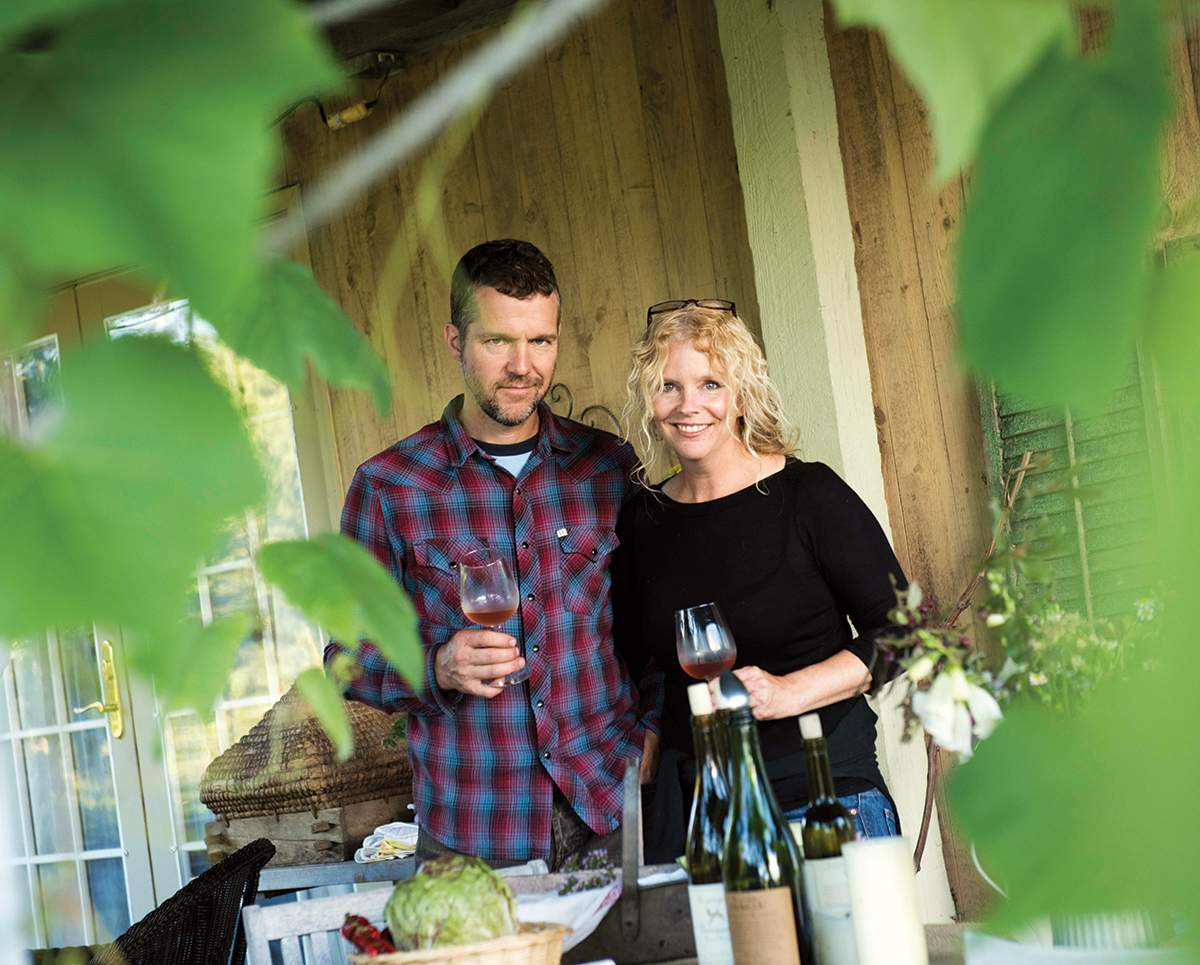Bottle Shock: La Garagista

Caleb Barber and Deirdre Heekin, the husband-and-wife team behind La Garagista. / Photograph by Caleb Kenna
Select West Coast winemakers may have finally gained entrée into the exclusive club monopolized for centuries by their European counterparts. But when it comes to the East Coast, not so much. New England’s harsh climate has kept the region’s wines from competing for a shot at the top.
But don’t tell that to La Garagista’s Deirdre Heekin, who believes the Green Mountain State, with its mineral-rich soil, is poised to become the world’s next elite grape- growing region. Sound ridiculous? After sampling Heekin’s “Damejeanne”—a blend of the little-known grapes Marquette and La Crescent—New York Times wine critic Eric Asimov called La Garagista one of his top labels of 2015.
So how did Heekin, a performance artist turned self-taught sommelier, start producing critically acclaimed wines that are now selling out in Boston, California, and New York?
While working at Osteria Pane e Salute Enoteca—the Woodstock, Vermont, restaurant she runs with her chef husband, Caleb Barber—Heekin fell in love with Italian varietals, eventually traveling abroad to witness the winemaking process firsthand. Afterward, she decided to attempt her own bathtub version with juice and grapes shipped from Boston. Taking her pursuit to the next level, Heekin then planted 100 cool-weather vines at the couple’s Barnard farm.
“If the wine doesn’t work out,” she remembers thinking, “we’ll have some really awesome vinegar.”
But she got far more than vinegar. And in 2014, the Barnard experiment expanded into two Champlain Valley vineyards, in West Addison and Vergennes, where heartier hybrid grapes—as opposed to more traditional Vitis vinifera such as chardonnay and pinot noir—began to thrive. Output has more than doubled every season, but demand still heavily outpaces supply. The combination of sudden notoriety and limited production means La Garagista is difficult to find at Heekin’s restaurant, let alone in Boston. “We don’t stock it; we hide it,” a manager at Cambridge’s Formaggio Kitchen confided.
Heekin credits La Garagista’s success to the distinctive terroir of Vermont, one of the world’s oldest and most diverse geological landscapes. For example, wines from her Vergennes vineyard showcase notes of Queen Anne’s lace, which grows wild there, while several blends from West Addison exhibit the unmistakable essence of the land’s mint and purple aster.
What’s next for La Garagista? Heekin is eyeing an expansion into locales as far-flung as Chicago, Texas, and Scandinavia, despite the limited yields feasible in Vermont. Growing wine grapes just south of the Great White North will always prove challenging, given the humidity and excessive rain, mildew, pests, and pop-up hail storms, like the one that hit last summer. But sometimes regions with the toughest weather (see: Burgundy, Chablis) end up producing superior wine. Why? Some grapes, as well as their caretakers, just seem to thrive under the most adverse circumstances.
[Photograph by Toan Trinh]
A BREED APART
Cold-hardy hybrids of American and European grapes are producing critically acclaimed wines from the rich Vermont soil, including these three stalwarts being used at La Garagista.
Marquette
Descended from pinot noir, this red varietal drinks more like fruity gamay. Notes: Dark cherry and graphite.
La Crescent
Related to moscato d’Amburgo and reminiscent of Gewürztraminer and Riesling. Notes: Floral, mineral, and with elements of stone fruit.
Frontenac Blanc
A relative of moscato d’Alexandria, another spur of Frontenac noir. Notes: Citrus, white flowers, and limestone.


